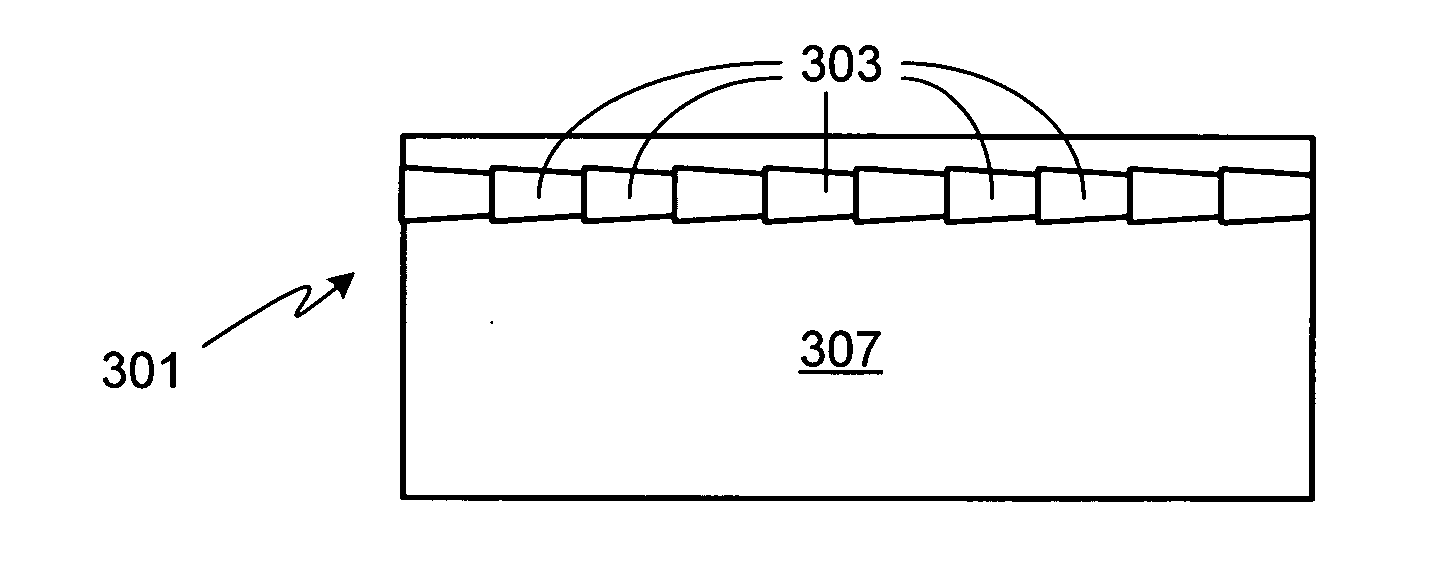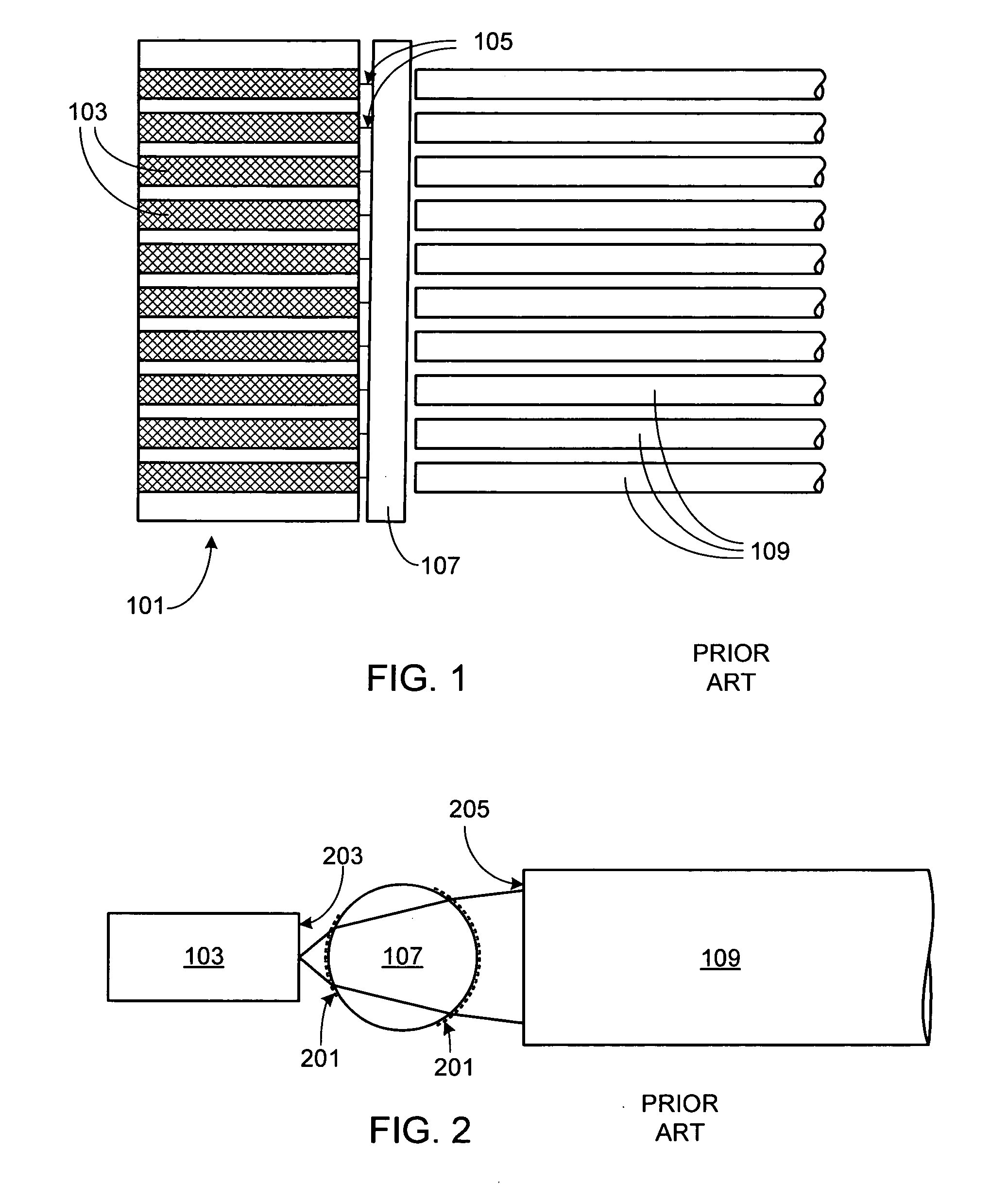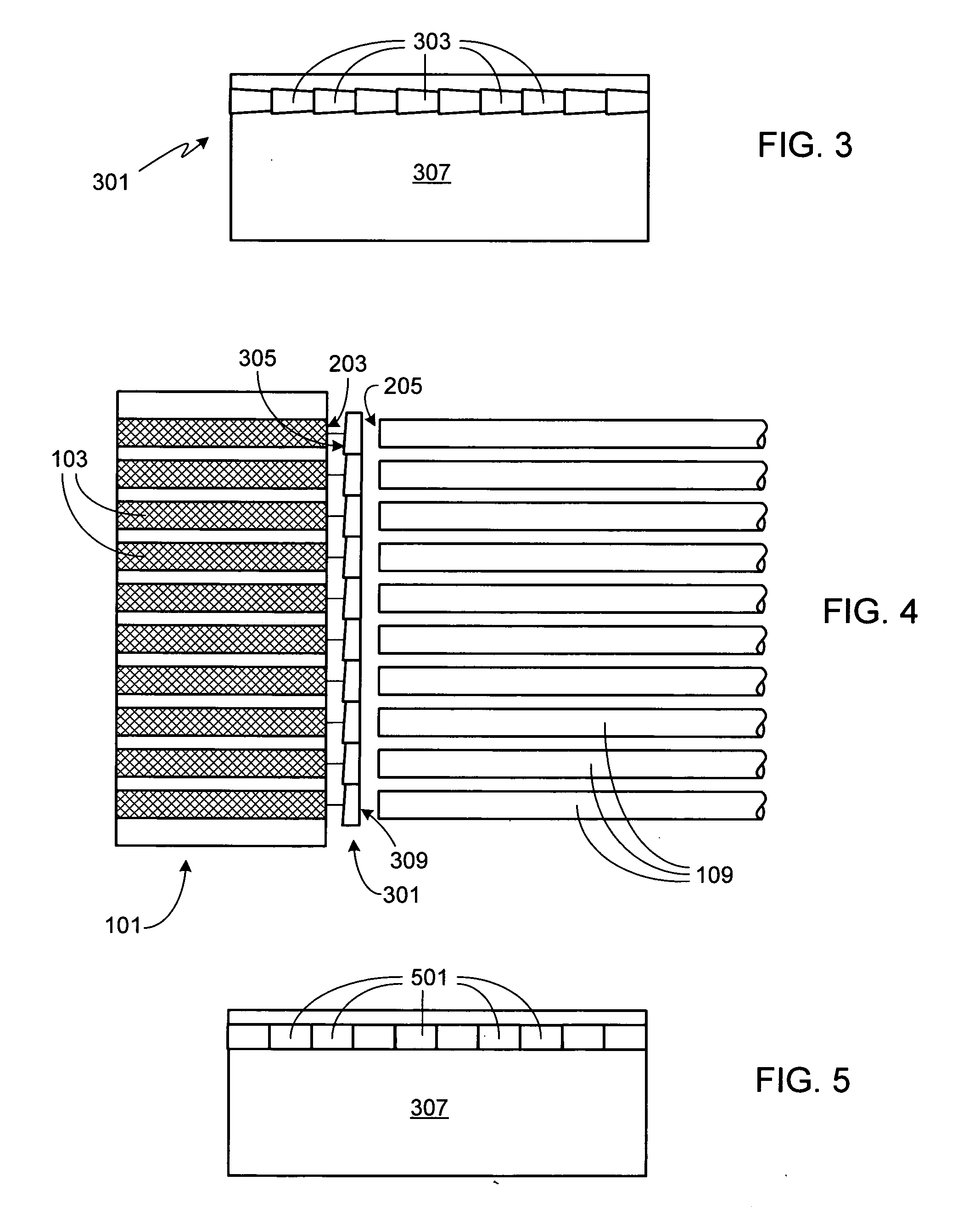Diode laser array coupling optic and system
- Summary
- Abstract
- Description
- Claims
- Application Information
AI Technical Summary
Benefits of technology
Problems solved by technology
Method used
Image
Examples
Embodiment Construction
[0022]FIG. 1 is an illustration of a diode laser array 101 (e.g., a diode laser bar or stack) consisting of a plurality of emitters 103, each emitting a beam of radiation 105. In accordance with the prior art, a cylindrical lens 107 is positioned between array 101 and a plurality of optical fibers 109. Cylindrical lens 107 compensates for the high angular divergence in the direction perpendicular to the diode junction of the emitters, typically reducing the beam divergence in the fast axis to less than that of the slow axis, thereby easing the assembly tolerances of the overall system compared to an assembly which does not use any coupling optics (i.e., one in which each fiber is simply placed in close proximity to the emitter to which it is to be coupled).
[0023] In a typical diode laser array 101, emitters 103 will have multiple spatial modes. As a result, optical fibers 109 are preferably multi-mode as well. Since the optical fibers are multi-mode, coupling lens 107 does not have...
PUM
 Login to View More
Login to View More Abstract
Description
Claims
Application Information
 Login to View More
Login to View More - R&D
- Intellectual Property
- Life Sciences
- Materials
- Tech Scout
- Unparalleled Data Quality
- Higher Quality Content
- 60% Fewer Hallucinations
Browse by: Latest US Patents, China's latest patents, Technical Efficacy Thesaurus, Application Domain, Technology Topic, Popular Technical Reports.
© 2025 PatSnap. All rights reserved.Legal|Privacy policy|Modern Slavery Act Transparency Statement|Sitemap|About US| Contact US: help@patsnap.com



